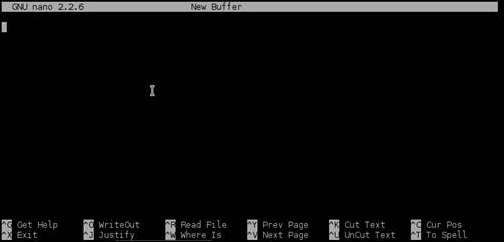Sometimes, you might need to edit a file on your Raspberry Pi: perhaps to edit the /etc/network/interfaces file in order to reconfigure your Raspberry Pi network interfaces, or you might need a text editor to write a document.
Fortunately, there are several text editors installed with Raspbian. The most commonly used text editors are:
nano
vim
Originally created in 1999 by Chris Allegretta, nano is the easiest text editor to use included on the Raspberry Pi.

The nano text editor
To edit a file in nano, you simply need to start typing. Once you have made changes, you need to save them and exit. The commands that you see at the bottom of the screen can be accessed by pressing the Ctrl key on your keyboard followed by the letter.
For instance, to exit after you have made changes, press Ctrl + x.
You will then be asked whether you want to save these changes. To do so, press y.

Saving changes in nano
You now need to enter the filename that you want in order to save the file. Once you have...



